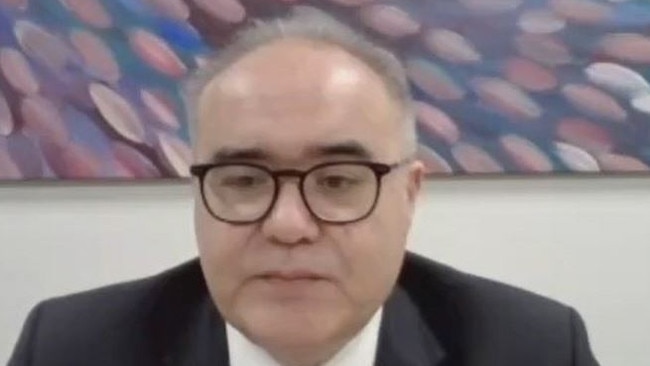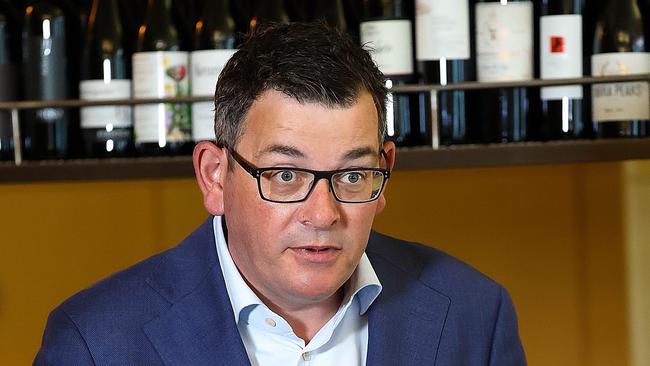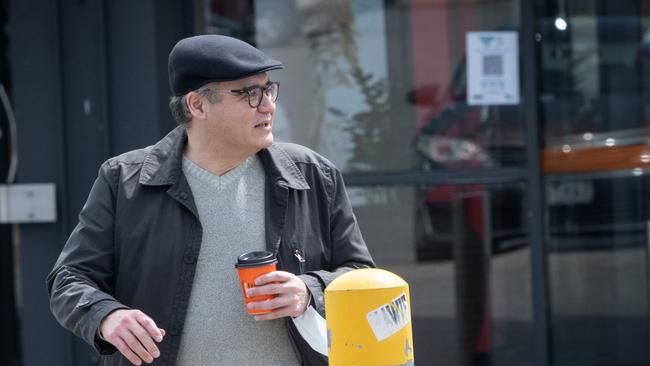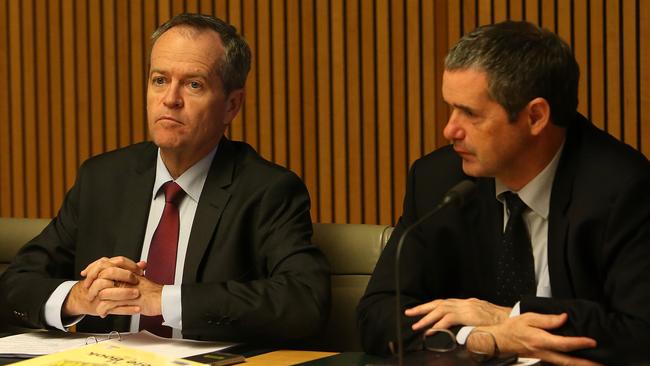IBAC: Adem Somyurek accuses Daniel Andrews, Stephen Conroy and Richard Marles of branch stacking
A former Labor powerbroker has delivered bombshell evidence to an anti-corruption inquiry, including claims about Dan Andrews.
Disgraced powerbroker Adem Somyurek has told an anti-corruption inquiry branch stacking has consistently been rife within Labor, accusing the party’s most senior leaders of engaging in the notorious practice to sway power in Victoria.
The former Andrews government minister told the inquiry he went head-to-head with the now premier when Mr Somyurek first entered politics in the mid-90s.
His bombshell evidence at the Independent Broad-Based Anti-Corruption Commission (IBAC) on Monday also accused former senator Stephen Conroy of “building an empire” and named federal Deputy Opposition Leader Richard Marles as a key member of the continued power grab.
Mr Somyurek said former opposition leader Bill Shorten changed membership requirements when he became leader in 2013 that encouraged branch stacking across the state — an organised method of collecting internal power by recruiting, and often paying fees, for new members.
In evidence given to the IBAC investigation into the misuse of taxpayer staff and resources, Mr Somyurek said he was “totally naive” when he first joined Victoria’s ALP branch in the mid-90s.

But he was soon acquainted with the notorious practice of branch stacking while working with Anthony Byrne to unseat his factional rival Gareth Evans.
During this period, Daniel Andrews was collecting memberships among ethnic minority groups to retain Mr Evans in the seat of Holt, Mr Somyurek told the hearing.
He said “branch staking was rife” in the ALP throughout the ‘90s, adding “the Left invented ethnic branch stacking” in Melbourne’s southeast, where “it was the Left and the Right going at it hammer and tong”.
“You had Anthony Byrne as the chief recruiter from the Right and I think Daniel Andrews was organising from the Left,” the former minister said.
“Raiding of the branches, in particular, was very toxic — tempers were frayed and it got nasty.”
Mr Somyurek told the hearing he took part in branch stacking, which he admitted was an improper way to rig preselection for a seat that he described as a “hostile takeover”.
But he offered a curious explanation for his involvement, saying non-ethnic politicians such as Mr Marles and Mr Conroy who engage in branch stacking were “cheats” because, as white privileged citizens, they had no barriers to winning preselection.
“But if you’re a person of an ethnic minority, there might be a rationalisation,” Mr Somyurek said.
“A sort of affirmative action by stealth because even though the Labor Party is of the left and we talk about policy, we still have a lot of unconscious bias in the Labor Party membership.”

‘Do you want to win the election or not?’
Mr Somyurek also levelled astonishing claims against his factional rival Daniel Andrews over the now infamous red shirts scandal, which involved the use of office staffers to campaign during the state poll.
The former powerbroker told the IBAC hearing he warned the then opposition leader in the lead up to the 2014 election about exposing the party to an investigation.
He described the scandal as a “gold standard” rort, which later led to the Victorian Labor Party repaying $388,000 in taxpayer money after the ombudsman found it misused parliamentary allowances.
“There would have been a concern politicians would have been hauled before IBAC for breaching their entitlements,” Mr Somyurek told the hearing in explaining why he raised concerns with Mr Andrews.
He said the now Premier responded with “words to the effect of ‘do you want to win an election or not?’”
Peace in the southeast
The notorious practice was so rampant in the southeast during the ‘90s the Left and Right agreed to a peace accord that lasted nearly two decades, Mr Somyurek told the hearing.
Mr Somyurek said the “southeast became a model of factional co-operation” until Mr Conroy tore down the deal in late December 2019.
“I wasn’t aware of this, but the Left had decided they were going to unilaterally break that deal, and by the time I woke up in late December they had already recruited 350 members or so,” he told the IBAC hearing.
He said the factional operation in Mr Byrne’s office included the presence of recruiters as electorate officers.
Mr Somyurek said Tayfun Eren, who worked initially as a staffer for John Brumby during the former premier’s time as opposition leader, “got himself into trouble” for branch stacking.
“Stephen Conroy himself when he was engaging in building an empire throughout Victoria by changing the balance of power was employed in a senator’s office when he was doing all of that work,” he said.
“It must have been a practice going back a very long time … it’s been a constant practice all the way through.”

Conroy’s rise to powerbroker
During the near-two-decade peace deal in the southeast, Mr Somyurek said Mr Conroy focused his power grab in the city’s west and Geelong, where the latter became a “major hotspot” in the 2000s.
“Richard Marles and John Eren, Tayfun Eren’s brother (who was) another notorious branch stacker, and, again, these two are Stephen Conroy’s friends,” Mr Somyurek told the hearing.
“Conroy’s business model was to send people into different areas, induce them with seats if they had branch stacked the lot and, in the meantime, what will happen is his empire will grow as these ambitious people branch stack to get into parliament.
“The scheme was Marles and Eren go to Geelong, take over Geelong, which they did from the Left to move out the sitting MPs.

“John Eren got himself a seat, Richard Marles got himself a seat, and Lisa Neville got herself a seat; Richard Marles’ former partner.
“They got delegates and those delegates were then (handed) to Stephen Conroy and he built an empire — that was the business model.”
Mr Somyurek said “another flashpoint” came when the federal leadership changed hands following the 2013 election when Kevin Rudd was replaced as the national party leader.
“Bill Shorten had this idea we should recruit 100,000 members,” Mr Somyurek told the hearing.
“And he thought the best way of doing that was stopping the barriers to entry — that is taking away one of the integrity measures of joining the party, (which was) not having to attend a branch meeting.
“So Victoria was forced to accept rule changes that allowed people to merely join up online to become a branch member.
“And as you can imagine, that was exploited — we had thousands of new members coming through new communities, including the Indian community.”



